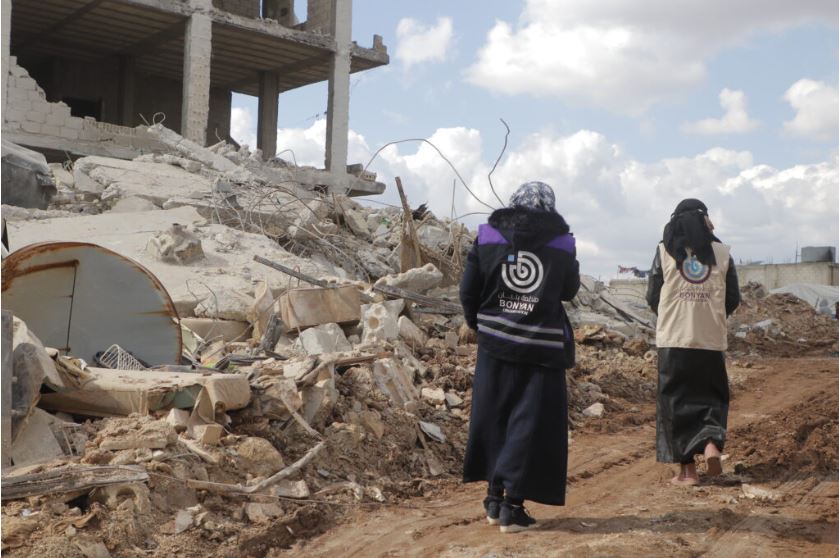An emergency response plan is one of the most crucial components in preparedness for natural disasters like earthquakes.
It entails reducing the impact of the damage caused by such a disaster and saving lives.
In this article, we discuss some of the actions involved in the process of the emergency response plan.
Immediate and emergency response
An emergency response plan is a blueprint that is key for reducing the impact of the damage caused by natural hazards such as earthquakes on the properties.
Immediate emergency response entails reducing the impact of the damage caused by natural disasters, reducing casualties, and saving lives.
Above all, emergency response to natural disasters details all the necessary measures that should be taken in order to alleviate the damage, protect lives, and restore important operations.
These actions are planned before, during, and after the occurrence of the natural hazard.
Emergency response in case of an earthquake includes the following steps:
- Forming an emergency team of professionals responsible for operations like evacuation, shutting down of utilities, and firefighting equipment checks.
- Preparing a contact list of authorities, construction material suppliers, building contractors, insurance providers, and other important agencies.
- Installing a main gas shut-off device and flexible connections on the gas apparatus.

Psychological support
Survivors of earthquakes encounter many psychological problems after their exposure to a natural hazard such as earthquakes.
Anxiety, depression, and post-traumatic stress disorder (PTSD) are some mental issues that such victims suffer from.
In such a case, psychological support becomes mandatory.
Primary prevention is necessary for those victims to recognize their emotions and to know how to control their effects on their behaviors and health.
This is often done by taking specific training and courses in order to teach such victims some techniques that would help them lead a normal life during the phases that precede this traumatic event.
Advocacy and awareness
Advocacy and awareness of earthquakes’ risks and dangers are key for protecting people and saving their lives.
Such awareness is important because it helps in the construction of earthquake-resistant houses in areas susceptible to seismic forces.
In addition, spreading knowledge about what people need to do in the event of earthquakes reduces the impact of the damage and helps prevent the loss of lives. Ways to spread knowledge include earthquake drills and public awareness programs.
Long-term recovery plan
Long-term recovery plans are concerned with the restoration of economic activity and rebuilding the community post-earthquakes.
In addition, a long-term recovery plan entails the completion of emergency programs and the return to normal daily life.
Such a process involves preparation by identifying points of strategic restoration, improvement, and growth prospects.
The preparation for a recovery plan often times is conducted prior to the occurrence of a disaster.
The long-term recovery plan should establish clear criteria for identifying the development goals related to economic growth, environmental protection, and the preservation of historical sites.
Community development
A well-designed community development plan is significantly important for preventing the hazards of earthquakes and mitigating their effects.
Community development plans involve:
- Identifying risks and hazards.
- Building safe building structures.
- Raising awareness of earthquake safety.

Nonprofits, NGOs and government agencies collaboration
The collaboration of key players, such as NGOs, nonprofits, and government agencies is an integral element of emergency response planning and preparedness.
In this sense, the nature of the collaboration is identified by 2 key factors, including:
- The needs of the disaster-affected communities.
- The goals of collaborating actors.
In addition, the collaboration process involves establishing partnerships in many areas and across varying levels of government to address the social problems related to earthquake aftermath.
Bonyan Organization ensures to help the affected Syrian refugee communities by the earthquake.
As millions of victims across Syria lost their loved ones, lost their homes and belongings, or got injured, it is our duty now to extend a helping hand to help them rebuild their lives.
One of the most important campaigns dedicated to helping those affected by the recent earthquakes is the “Emergency Response to Turkey-Syria Earthquake” campaign.
This campaign aims to help those impacted by the disaster by providing them with food, water, housing, medical assistance, winter clothing, and warm blankets.
Donate now at this link:
https://www.launchgood.com/campaign/keep_syrian_children_warm_3?src=internal_comm_page#!/
Join our efforts at Bonyan to help those affected and give them the help they need!
Resources
- Can we cause earthquakes? Is there any way to prevent earthquakes?
- How to Create a Long Term Disaster Recovery Plan.
- Earthquake And Loss Of Control: Psychologist Explains The Psychological Risks Of An Earthquake.
FAQ
What is the role of NGO in earthquakes?
The role of NGO in earthquakes includes providing assistance in many areas, such as:
Health.
Education.
Sanitation.
Shelter.
What is the role of NGO in protecting earthquake victims?
The role of NGOs in protecting earthquake victims includes providing them with shelter and educating them on how to protect themselves in case an earthquake happens.



